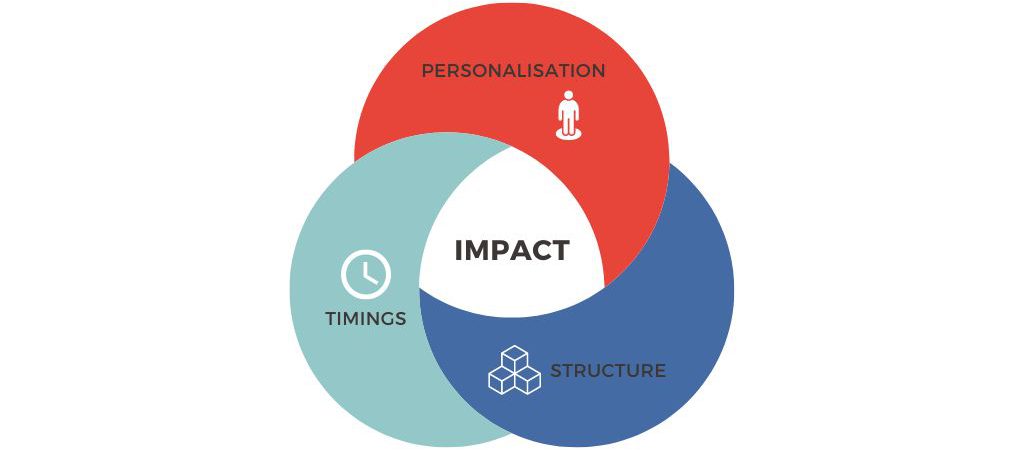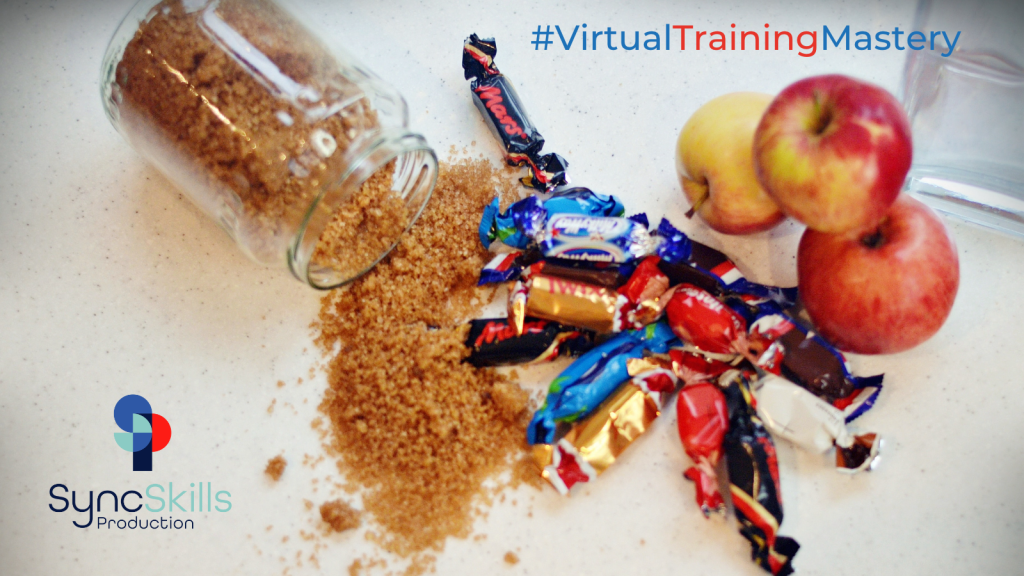
So far in this series we’ve outlined the importance of scoping and using a design framework as the foundations of virtual training mastery. We’re now ready to start designing the learning journey!
Here are the top three considerations for high impact learning:

Further posts
-
Contact SyncSkills
- +44(0) 1737 779480
- hello@syncskills.net
TIMINGS
“Keep sessions short”
Time isn’t on our side in the virtual classroom – remote learning is more prone to distraction so it’s harder to maintain engagement. And as we’ve said before, less is more if you want to maximise retention. So keep session lengths shorter than you would in the classroom – somewhere between 90 minutes to 3 hours.
PERSONALISATION
“One size does not fit all”
To be relevant to each learner you need to cater to individual starting points, roles, and team cultures.
Well designed learning builds in time and opportunity for each person to:
- Understand the importance of learning or developing new skills
- Identify and start at their own current skill level
- Figure out how the learning is relevant to their role, and consider how they could apply it e.g. by including time for individual reflection, plus opportunities to share back their understanding and plans, discuss and brainstorm with others, and receive feedback
- Commit to how they’re going to apply it in real life (ideally including how they will be held accountable)
- Reflect on their real-life experiences of applying the new skills, sharing learnings and defining their next steps
Design this into your sessions and you’ll notice engagement and impact levels grow.
STRUCTURE
“Plan for 3 parts activity to 1 part content”
Interaction is the key to successful engagement, retention, and application in the workplace (and lecturing a sure path to failure!)
Most trainers will say this is too much – but that’s usually because there are too many learning objectives and/or they’re too vague. So yes, where this is the case, learners will simply jump from one topic to the next, with a little bit of content and a short, superficial activity that only makes sense for beginners. However, where good scoping has set and prioritised specific learning objectives, you can spend a good amount of time on each one to really embed the understanding (I recommend a maximum of two per hour.)
Evaluation of learning has consistently proven that active engagement of learners through meaningful activities will always yield the highest impact.
At SyncSkills we use something we call the ‘Apple Jar Method’. When we’re planning the flow of a session we start with the activities, and then fit the content around it – just like if you had to pack the maximum amount of apples, sweets and sugar into a jar, it’s best to start with the largest and most needed items (the apples), and then fill up the blank spaces with the sugar (the content), and sweets (the content based interactive elements). If you start with the sugar, you’ll fill up the jar and not have enough time for the activities.

5 Steps for Learning Flow Design
With all of this in mind, here are the steps we go through to design the best structure for a learning experience:
- Revisit the SMART learning objectives and identify the specific behaviours that will enable them to be achieved
- Brainstorm activities and practices that will allow learners to develop the skills to exhibit each behaviour
- Plan just enough content to help learners understand the required skill or competency
- Define job aids to help learners embody these behaviours in the workplace – like easily digestible short video tutorials and check lists
- Choose a suitable way to assess if the behaviors have been adopted and their impact on the SMART objectives
This model helps our clients avoid the death by PowerPoint trap and deliver courses that significantly increase the level of retention and skills transfer into the workplace.
If you want to have a go yourself, sign up below to our dedicated fortnightly email which gives you access to free resources, including our Design Template. We’d love to know what you think!
Next time…
Planning in this much interaction creates another problem for trainers – how to facilitate it – especially in the virtual environment! But don’t fret – we’ll be sharing more on that in future weeks. In the meantime, our next blog is going to focus on another crucial aspect of virtual training mastery – building trust with your learners.
To keep up to date with this insight series, sign up below for our dedicated fortnightly newsletter, or follow us on LinkedIn and join the conversation!
Sign up to our dedicated fortnightly newsletter here:
-
Contact SyncSkills
- +44(0) 1737 779480
- hello@syncskills.net
We do not spam and you can unsubscribe at your convenience.


